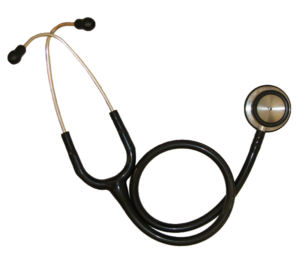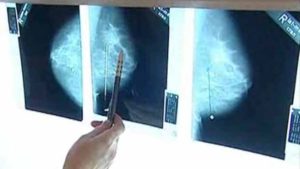 This is similar to what Dr. Gilbert Welch and others have been saying for a while - that studies show much cancer screening leads to overdiagnosis and overtreatment with no real differences in rates of mortality (death). Which was the whole point of cancer screening - to catch cancers early and so reduce rates of death. (For more on this topic see here, here, here, and here.) There are harms from overtreatment (unnecessary treatment), and with prostate cancer treatment there can be adverse effects on sexual (erectile dysfunction) , urinary, or bowel function, and sometimes even death from surgery. Remember that many prostate cancers are "indolent" or very slow growing, and may remain asymptomatic throughout the man's lifetime. Currently the U.S. Preventive Services Task Force (USPSTF) recommends against prostate-specific antigen (PSA)-based screening for prostate cancer for these reasons.
This is similar to what Dr. Gilbert Welch and others have been saying for a while - that studies show much cancer screening leads to overdiagnosis and overtreatment with no real differences in rates of mortality (death). Which was the whole point of cancer screening - to catch cancers early and so reduce rates of death. (For more on this topic see here, here, here, and here.) There are harms from overtreatment (unnecessary treatment), and with prostate cancer treatment there can be adverse effects on sexual (erectile dysfunction) , urinary, or bowel function, and sometimes even death from surgery. Remember that many prostate cancers are "indolent" or very slow growing, and may remain asymptomatic throughout the man's lifetime. Currently the U.S. Preventive Services Task Force (USPSTF) recommends against prostate-specific antigen (PSA)-based screening for prostate cancer for these reasons.
This study in the New England Journal of Medicine reported on men diagnosed with prostate cancer, with the men then assigned to either monitoring or treatment (surgery or radiation), and then followed for 10 years. Much to the researchers' surprise, the survival rates from prostate cancer were equally high in all the groups - 99%. Now, as the researchers themselves point out - the groups of men need to be followed for more years. Will there be differences after 15 or 20 years? Also, if there is prostate cancer progression in the monitored group (and more men did have disease progression in this group after 10 years, even though the numbers were low), can it still be treated just as successfully? More studies are needed. Note that there was cancer progression among some men even in both treatment groups.
Other important prostate cancer studies are also needed. Are there differences among those men for whom cancer progresses and for those that it doesn't? Does intense exercise make a difference (as some think)? Dietary differences, such as a plant based diet? Body fat or weight? From Science Xpress: Treat or monitor early prostate cancer? 10-yr survival same
Men with early prostate cancer who choose to closely monitor their disease are just as likely to survive at least 10 years as those who have surgery or radiation, finds a major study that directly tested and compared these options. Survival from prostate cancer was so high—99 percent, regardless of which approach men had—that the results call into question not only what treatment is best but also whether any treatment at all is needed for early-stage cases. And that in turn adds to concern about screening with PSA blood tests, because screening is worthwhile only if finding cancer earlier saves lives.
The study involved more than 82,000 men in the United Kingdom, aged 50 to 69, who had tests for PSA, or prostate specific antigen. High levels can signal prostate cancer but also may signal more harmless conditions, including natural enlargement that occurs with age. Researchers focused on the men diagnosed with early prostate cancer, where the disease is small and confined to the prostate. Of those men, 1,643 agreed to be randomly assigned to get surgery, radiation or active monitoring. That involves blood tests every three to six months, counseling, and consideration of treatment only if signs suggested worsening disease.
A decade later, researchers found no difference among the groups in rates of death from prostate cancer or other causes. More men being monitored saw their cancers worsen—112 versus 46 given surgery and 46 given radiation. But radiation and surgery brought more side effects, especially urinary, bowel or sexual problems....PSA testing remains popular in the U.S. even after a government task force recommended against it, saying it does more harm than good by leading to false alarms and overtreatment of many cancers that would never threaten a man's life. In Europe, prostate cancer screening is far less common.
From the original study in the The New England Journal of Medicine: 10-Year Outcomes after Monitoring, Surgery, or Radiotherapy for Localized Prostate Cancer
The comparative effectiveness of treatments for prostate cancer that is detected by prostate-specific antigen (PSA) testing remains uncertain. In the United States alone, an estimated 180,890 cases will be diagnosed in 2016, and 26,120 men will die from the disease.1 The widespread use of PSA testing has resulted in a dramatic increase in the diagnosis and treatment of prostate cancer, but many men do not benefit from intervention because the disease is either indolent or disseminated at diagnosis. Prostate cancer often progresses slowly, and many men die of competing causes. In addition, interventions for prostate cancer can have adverse effects on sexual, urinary, or bowel function. Two treatment trials have evaluated the effectiveness of treatment, but they did not compare the most common contemporary methods: surgery, radiotherapy, and monitoring or surveillance
We compared active monitoring, radical prostatectomy, and external-beam radiotherapy for the treatment of clinically localized prostate cancer. Between 1999 and 2009, a total of 82,429 men 50 to 69 years of age received a PSA test; 2664 received a diagnosis of localized prostate cancer, and 1643 agreed to undergo randomization to active monitoring (545 men), surgery (553), or radiotherapy (545). The primary outcome was prostate-cancer mortality at a median of 10 years of follow-up. Secondary outcomes included the rates of disease progression, metastases, and all-cause deaths.
There were 17 prostate-cancer–specific deaths overall: 8 in the active-monitoring group (1.5 deaths per 1000 person-years; 95% confidence interval [CI], 0.7 to 3.0), 5 in the surgery group (0.9 per 1000 person-years; 95% CI, 0.4 to 2.2), and 4 in the radiotherapy group (0.7 per 1000 person-years; 95% CI, 0.3 to 2.0); the difference among the groups was not significant (P=0.48 for the overall comparison). In addition, no significant difference was seen among the groups in the number of deaths from any cause (169 deaths overall; P=0.87 for the comparison among the three groups). Metastases developed in more men in the active-monitoring group (33 men; 6.3 events per 1000 person-years; 95% CI, 4.5 to 8.8) than in the surgery group (13 men; 2.4 per 1000 person-years; 95% CI, 1.4 to 4.2) or the radiotherapy group (16 men; 3.0 per 1000 person-years....). Higher rates of disease progression were seen in the active-monitoring group (112 men; 22.9 events per 1000 person-years; 95% CI, 19.0 to 27.5) than in the surgery group (46 men; 8.9 events per 1000 person-years; 95% CI, 6.7 to 11.9) or the radiotherapy group (46 men; 9.0 events per 1000 person-years....).
At a median of 10 years, prostate-cancer–specific mortality was low irrespective of the treatment assigned, with no significant difference among treatments. Surgery and radiotherapy were associated with lower incidences of disease progression and metastases than was active monitoring.

 A report by 3 prominent specialists (including Gilbert Welch - who has been discussed in earlier
A report by 3 prominent specialists (including Gilbert Welch - who has been discussed in earlier